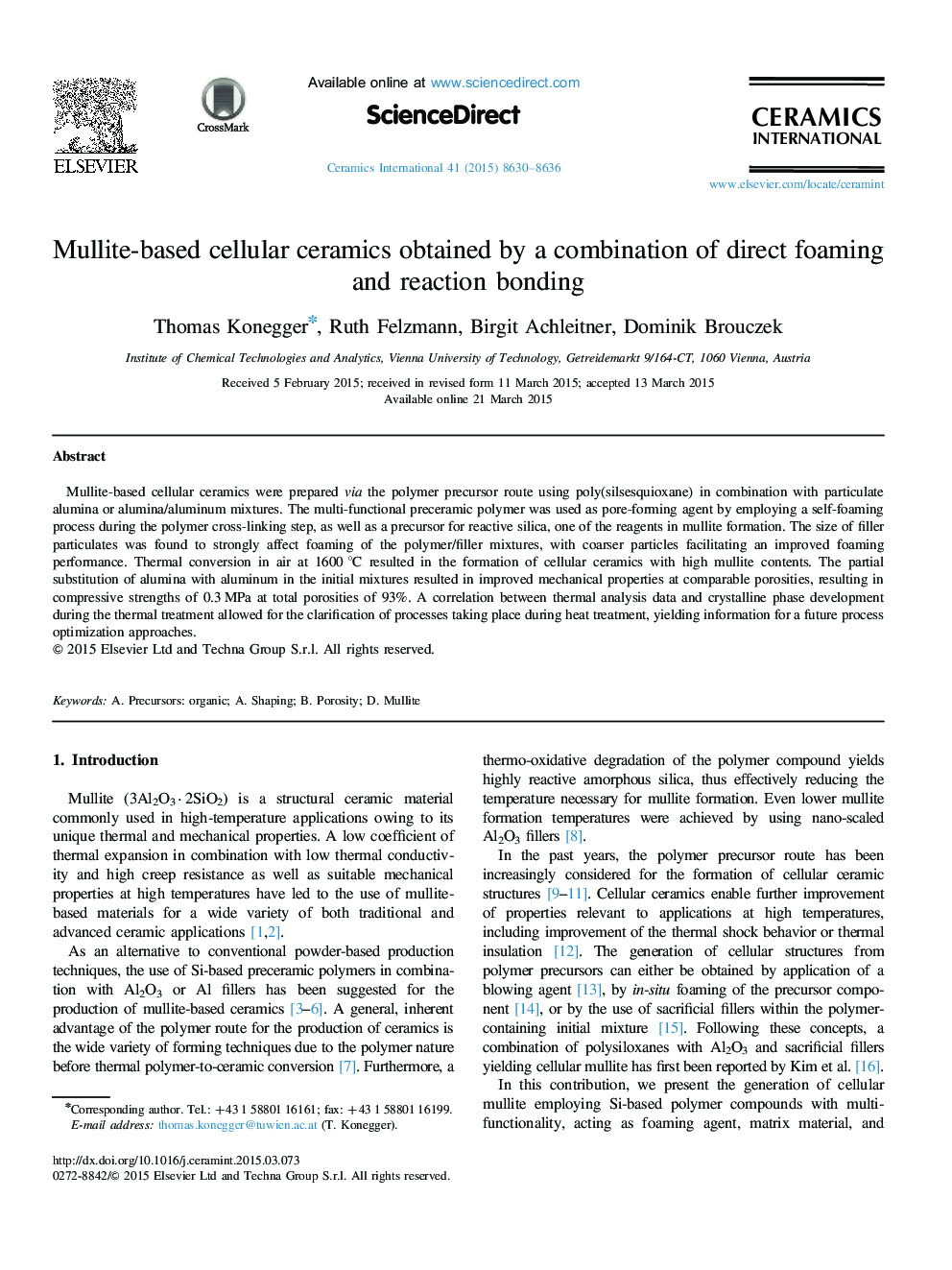| Article ID | Journal | Published Year | Pages | File Type |
|---|---|---|---|---|
| 10624589 | Ceramics International | 2015 | 7 Pages |
Abstract
Mullite-based cellular ceramics were prepared via the polymer precursor route using poly(silsesquioxane) in combination with particulate alumina or alumina/aluminum mixtures. The multi-functional preceramic polymer was used as pore-forming agent by employing a self-foaming process during the polymer cross-linking step, as well as a precursor for reactive silica, one of the reagents in mullite formation. The size of filler particulates was found to strongly affect foaming of the polymer/filler mixtures, with coarser particles facilitating an improved foaming performance. Thermal conversion in air at 1600 °C resulted in the formation of cellular ceramics with high mullite contents. The partial substitution of alumina with aluminum in the initial mixtures resulted in improved mechanical properties at comparable porosities, resulting in compressive strengths of 0.3 MPa at total porosities of 93%. A correlation between thermal analysis data and crystalline phase development during the thermal treatment allowed for the clarification of processes taking place during heat treatment, yielding information for a future process optimization approaches.
Related Topics
Physical Sciences and Engineering
Materials Science
Ceramics and Composites
Authors
Thomas Konegger, Ruth Felzmann, Birgit Achleitner, Dominik Brouczek,
